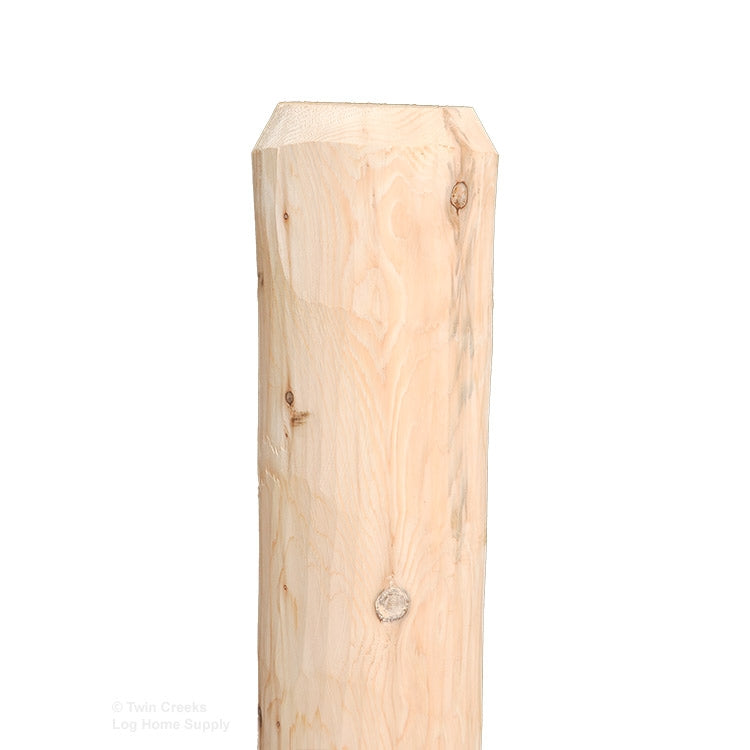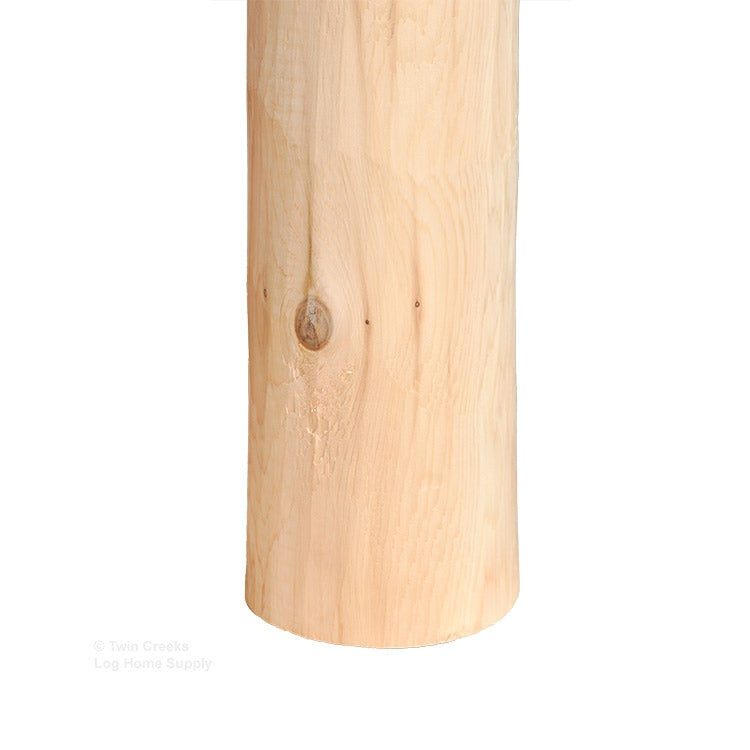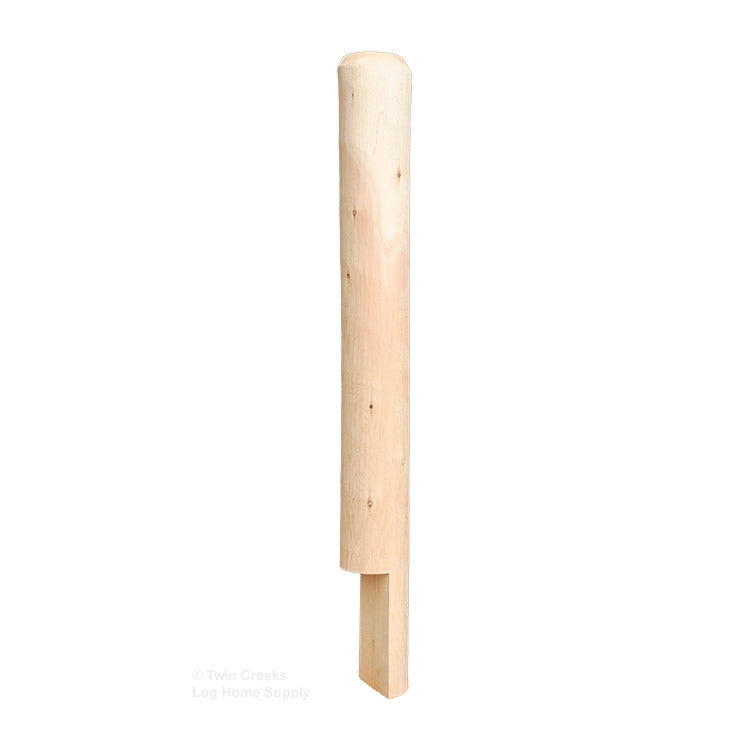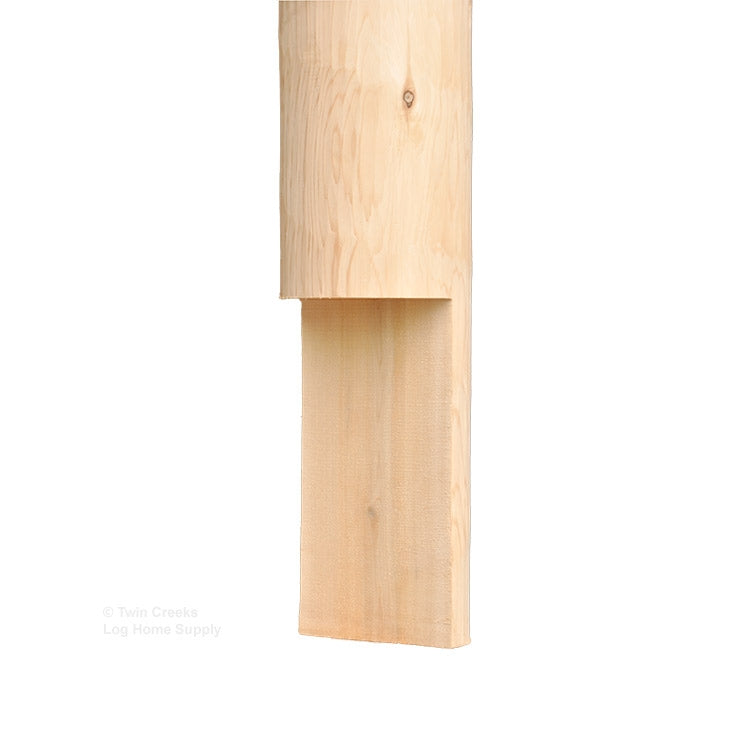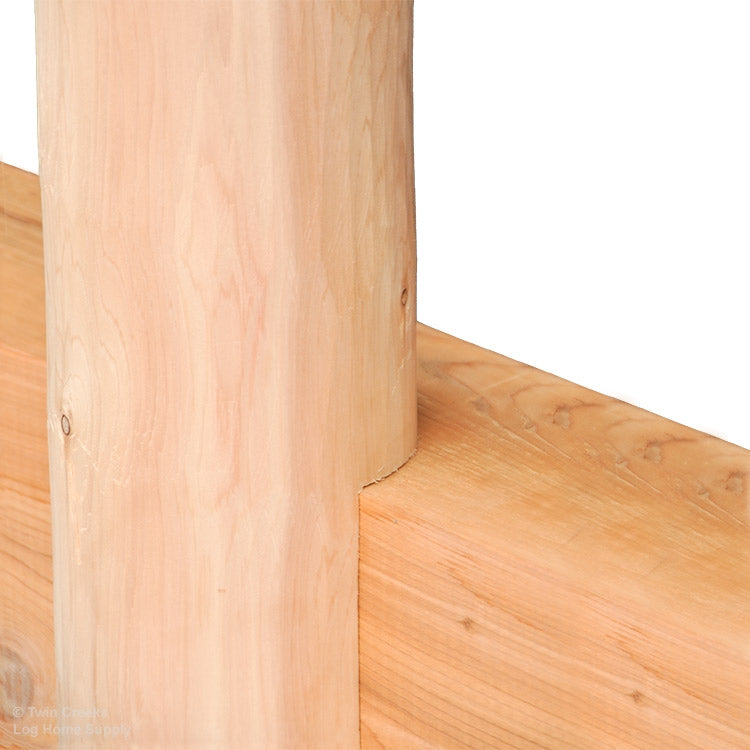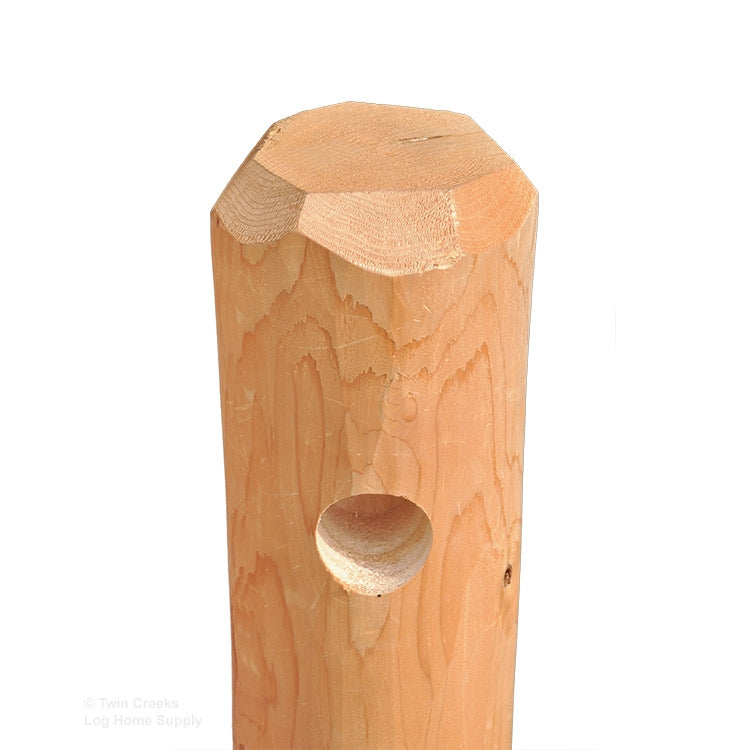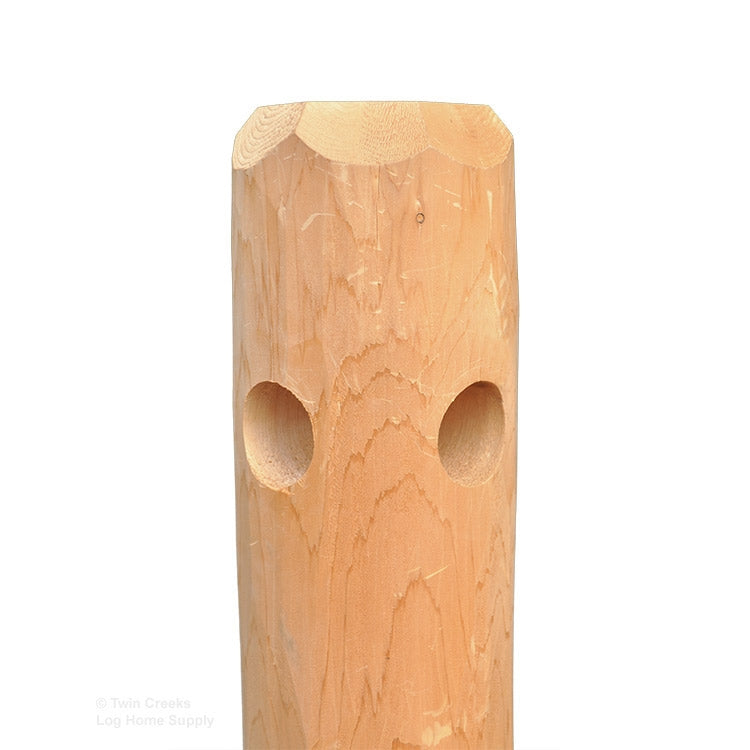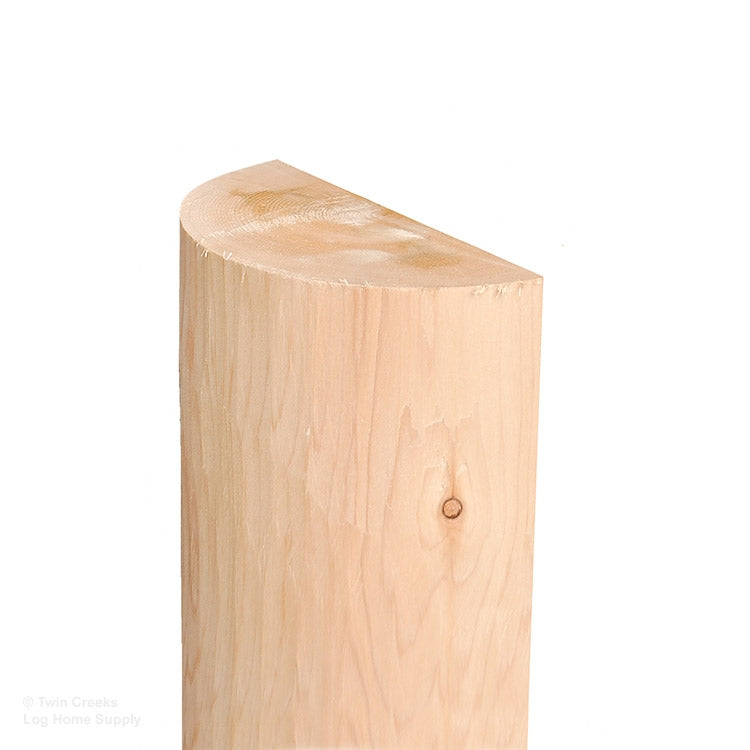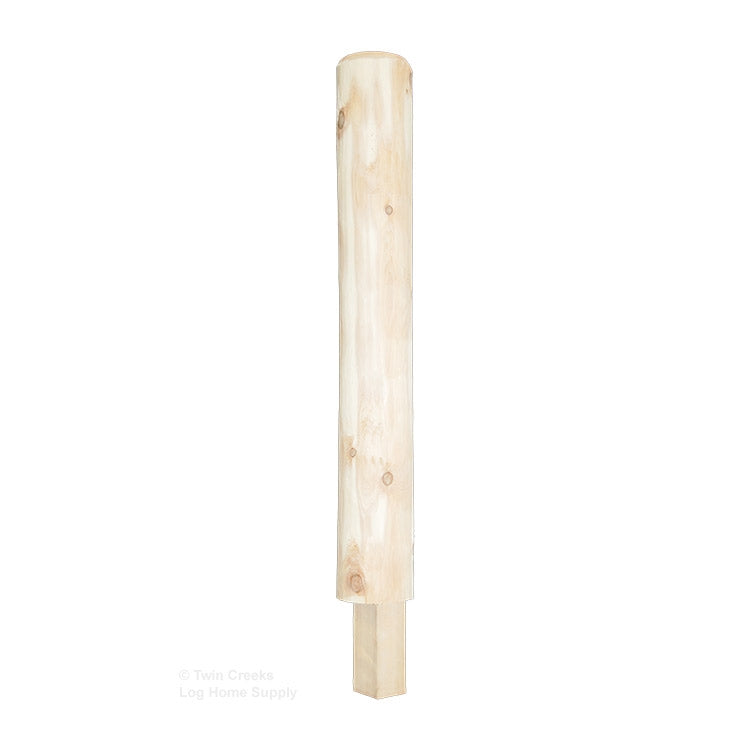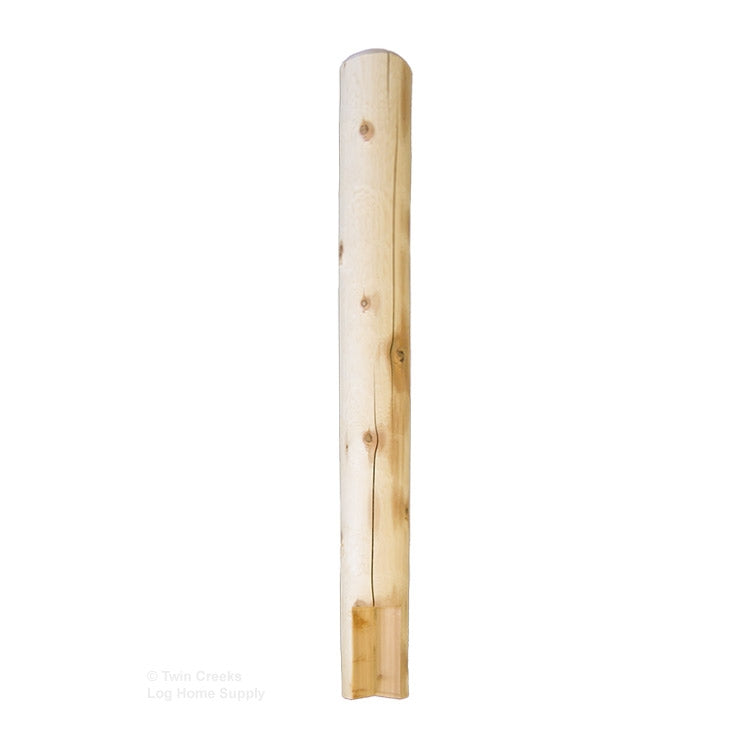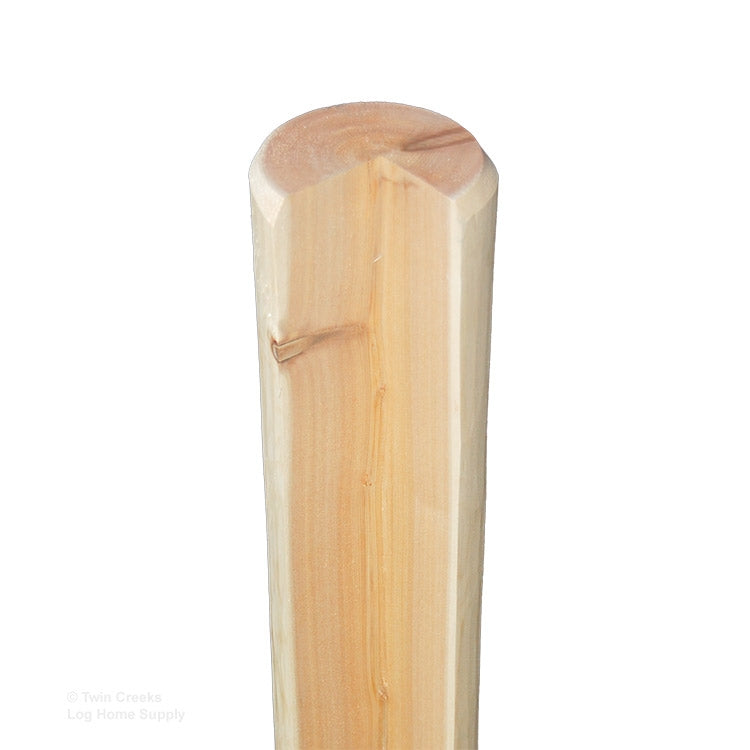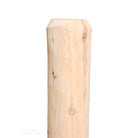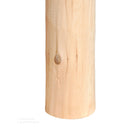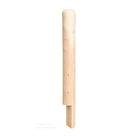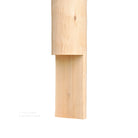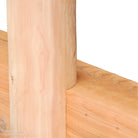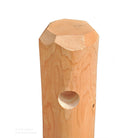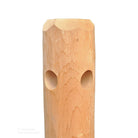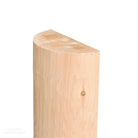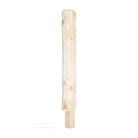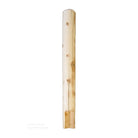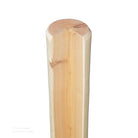Northern White Cedar Hand Peeled Rail Posts
Details
Northern White Cedar Hand Peeled Rail Post Specifications:
• Available Lengths: 48" and 54" lengths
• Typical Lead Time: This product is hand peeled at the time it is ordered to prevent the grain from naturally graying. Typically available in 1-2 weeks.
• Drying Type: Air-Dried
• Texture: Hand Peeled
• Fastener Type: Stainless Steel Nail or Screw
• Optional Drill Cuts: Rail posts can have mortise-and-tenon holes drilled to accept rail sections. Please call for current pricing.
• Notching Options: Notches can be cut to accommodate needed connections to the wall or deck. Available methods are Flat Notch, Outside Corner Notch, and Inside Corner Notch. Please call for current pricing.
• Additional Post Profiles: Northern White Cedar Rail Posts are also available as Split Posts and Posts with a Full Length Outside Corner Notch. Please call for current pricing.
• Shipping Options: Flat-bed tractor trailer, Roll Back, LTL Carrier. Shipping method is determined based on location and order size to minimize cost.
Northern White Cedar Hand Peeled Rail Post Features & Benefits:
• Naturally Resistant to Decay, Moisture and Insects
• Minimal Sapwood Content
• Straight Grain Pattern and Tight Knot Structure
• Distinct but Modest Aroma
• Very Light When Dried and Very Durable Due to its Natural Slow Growth Process
• Naturally Weathers to a Silvery Gray Color Unfinished.
• Accepts Oil and Water Based Stain Exceptionally Well.
How Can Northern White Cedar Be Used?
• Outdoor Applications: Decks & Railings, Balconies, Utility Poles, Outdoor Furniture, Fence Posts.
• Indoor Applications: Stair Railings/Hand Railings, Log Home Furniture, Interior Support Poles.
Preparing Northern White Cedar for Staining
Proper preparation of your northern white cedar product before staining, as well as the staining procedure itself, can ensure that your finished product exceeds expectations. Below are a few valuable tips for the proper preparation of the wood and application of wood staining products.
- Prepare the Hand Peeled Rail Posts: Use a TSP and Bleach (optional) cleaning solution to clean the wood if you need to remove any dirt on the surface before staining.
- Stain quality: There is a wide range of products and the best products can be the most expensive. Even a quality stain will not wear well if preparation is inadequate or sun exposure is excessive. Look for guarantees and for stain life expectancies as published by the manufacturer. Follow all manufacturers’ recommendations for product preparation and stain application.
- Color choice: The predominant enemy of stain is the UV rays of the sun. Lighter stain colors will fail faster than darker stain colors because UV rays penetrate further into the lighter colored product.
- Limit sun exposure: If you are still designing your home, you might want to position your home in relation to the sun in order to minimize sun exposure. It is always good idea to have an 18-24 inch overhanging soffit on your roof to keep your log siding out of the sun as much as possible.
What is the Difference between White Cedar & Red Cedar?
Northern White Cedar (Thuja Occidentalis) differs from Western Red Cedar (Thuja Plicata) in leaf color (dull, yellowish green on both surfaces), seed cones scale formation, tree size, and geographic regions of growth.
Northern White Cedar’s primary growth area is in the cold, swampy perimeters of the Great Lakes, while Western Red Cedar primarily grows in the Pacific Northwest in Washington and British Columbia.
Northern White Cedar is yellowy-beige in color while Western Red Cedar has a reddish-brown appearance.
The decay resistance of the two trees is generally similar. The most decay resistant part of a tree is the heartwood. White Cedar will normally have the heartwood of the tree in nearly 100% of the lumber pieces. Red Cedar may have the heartwood of the tree in about 10% of the lumber as Western Red Cedar trees are significantly larger in diameter than Northern White Cedar.
Northern White Cedar Care and Maintenance:
As with all exterior wood, we recommend applying a quality finish to all surfaces including the ends. An exterior finish protects the wood from moisture absorption and UV degradation, and helps prevent staining caused by mold and mildew. We offer a wide selection of Oil and Water Based exterior finishes we can recommend based on the final finish, sheen, and maintenance schedule that is desired. Most translucent exterior finishes will need to be re-coated or reapplied every 3 -5 years depending on the product and your home's UV exposure. You can find all the exterior stain products we carry at our Exterior Stains page.

